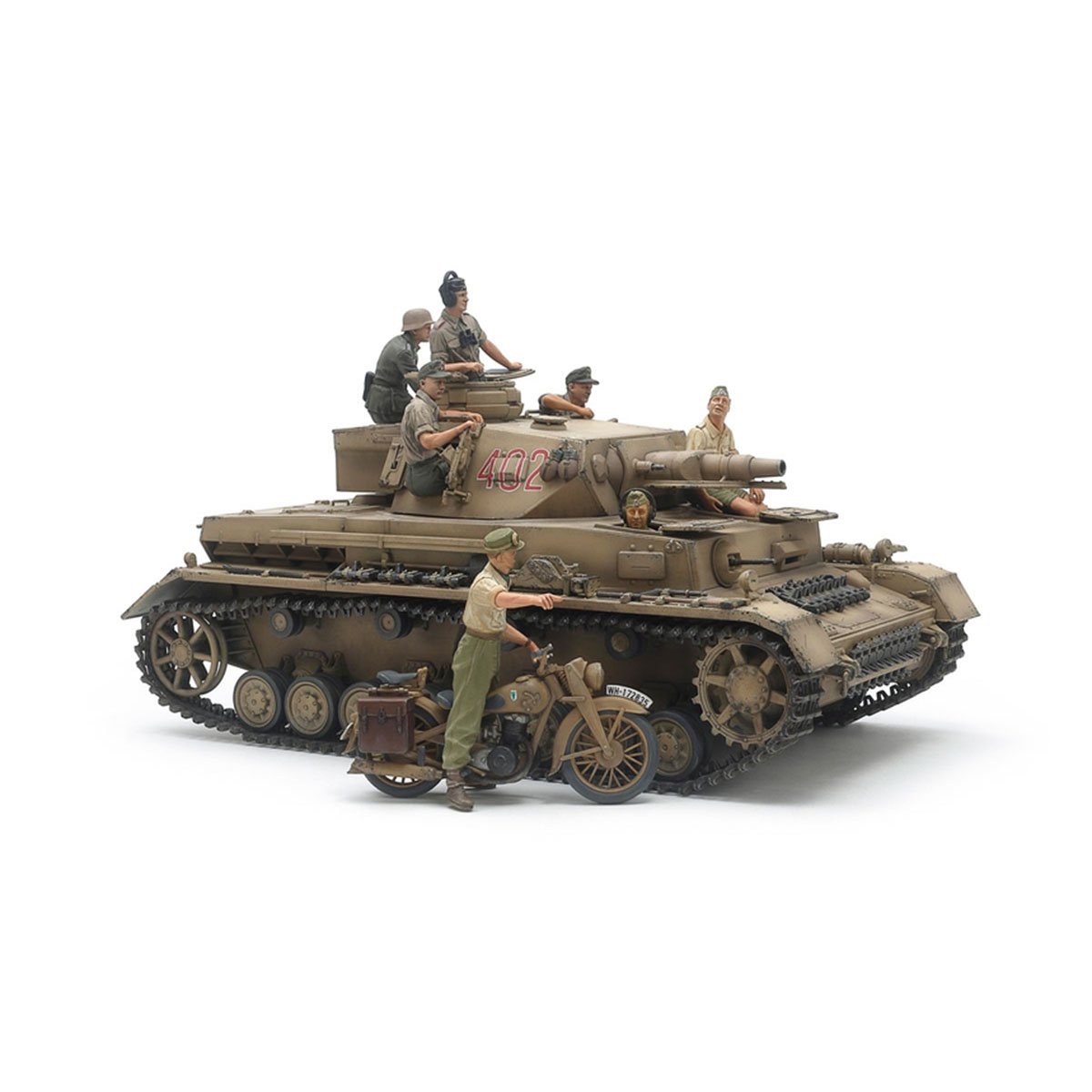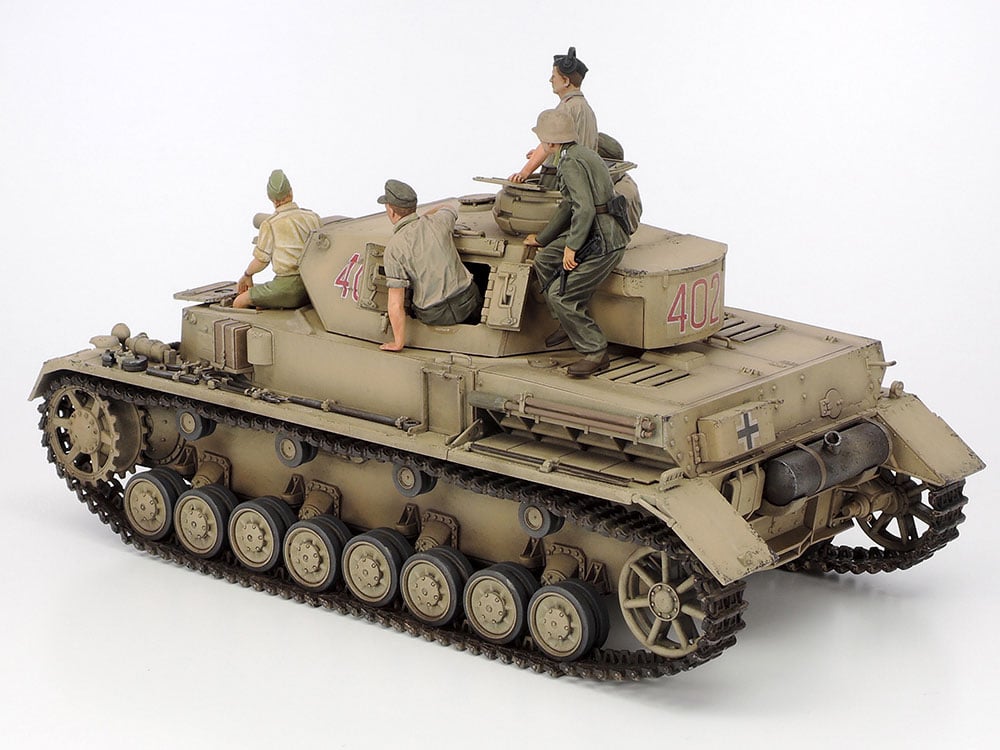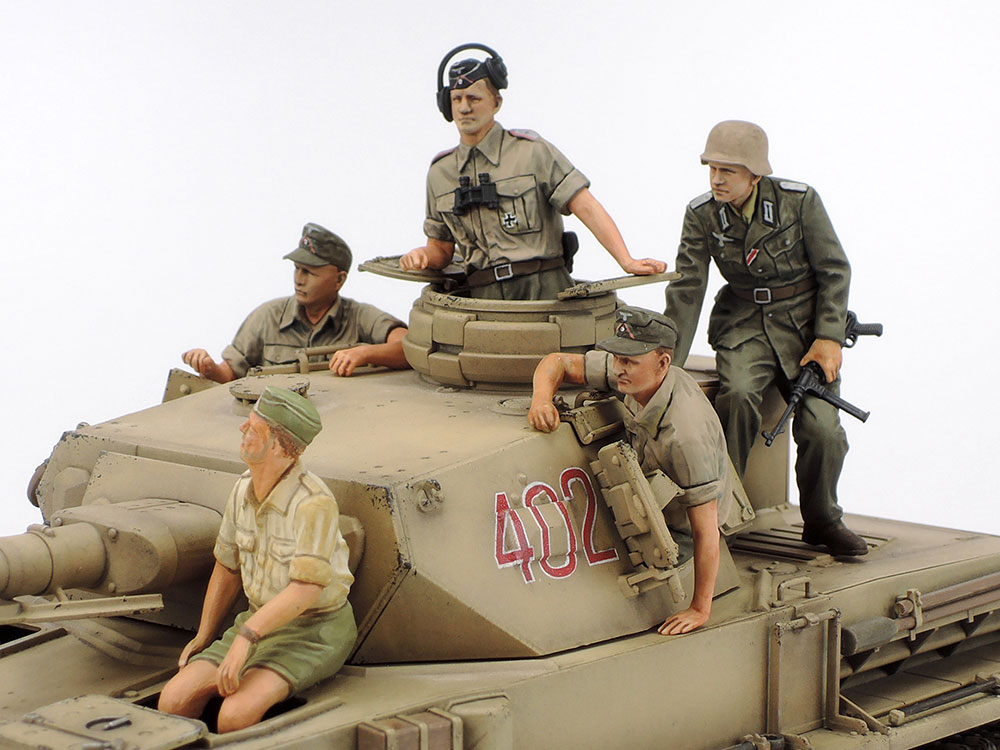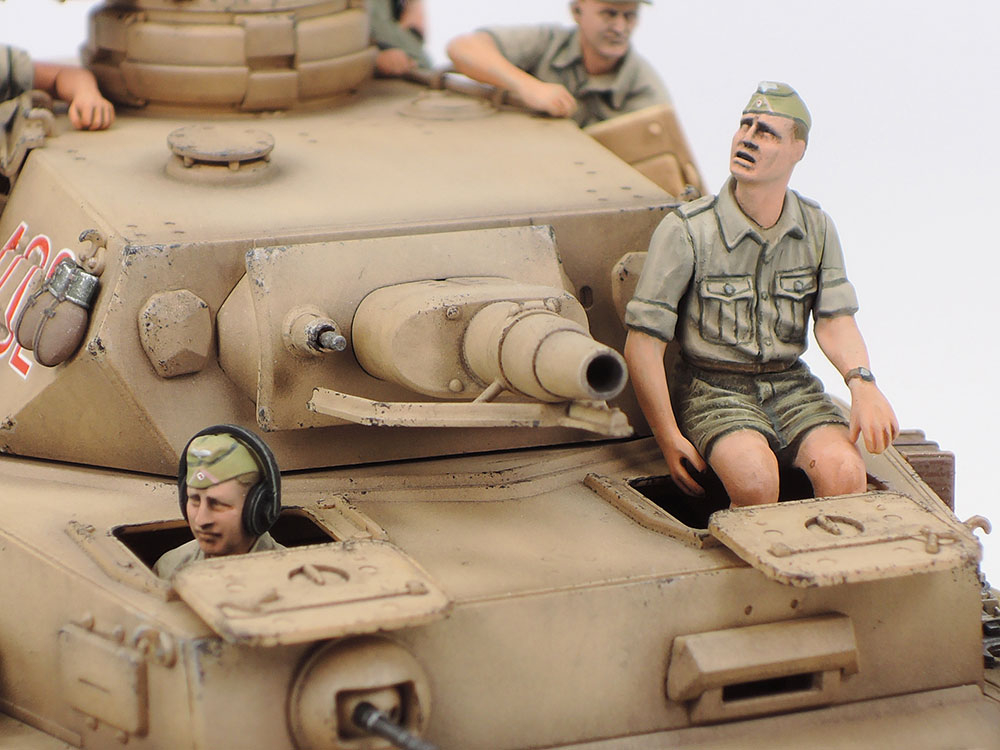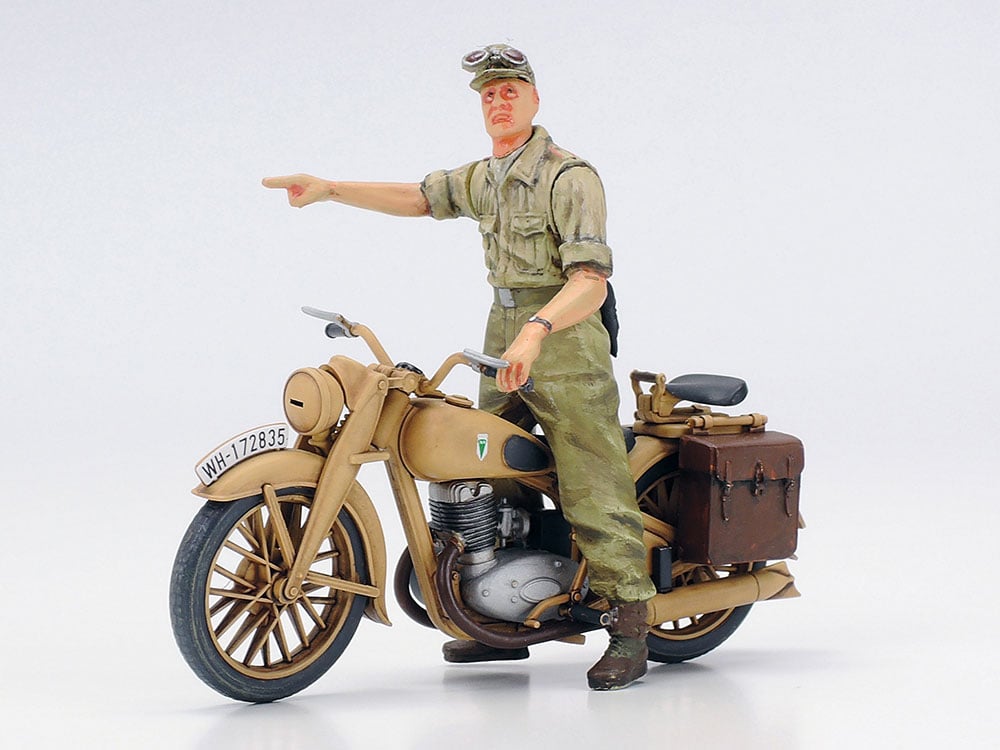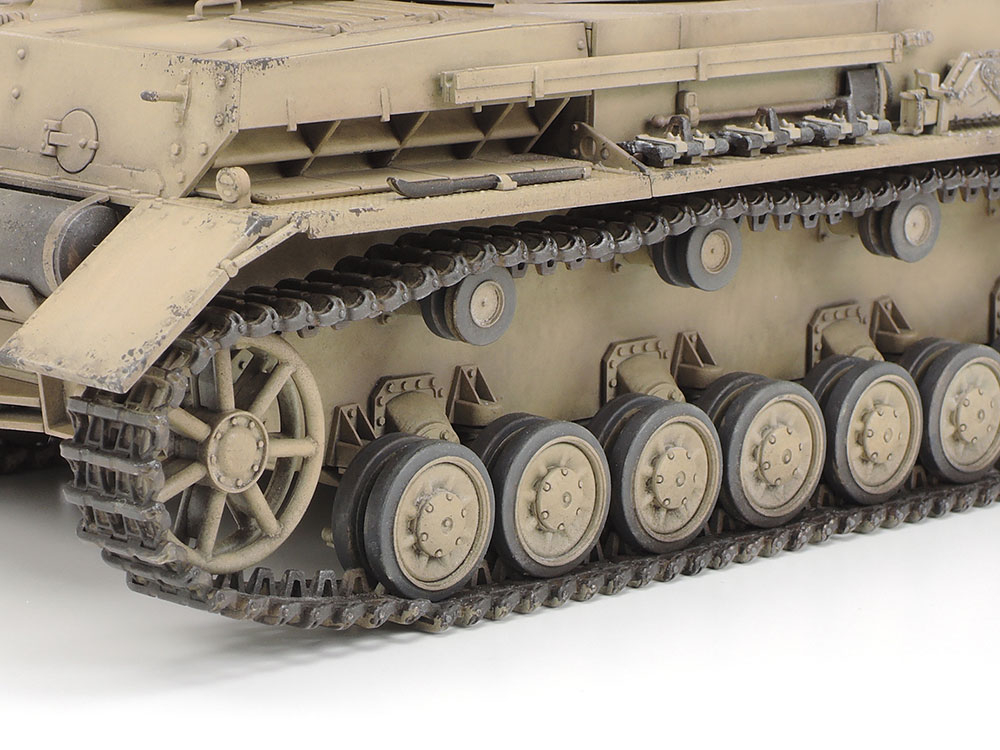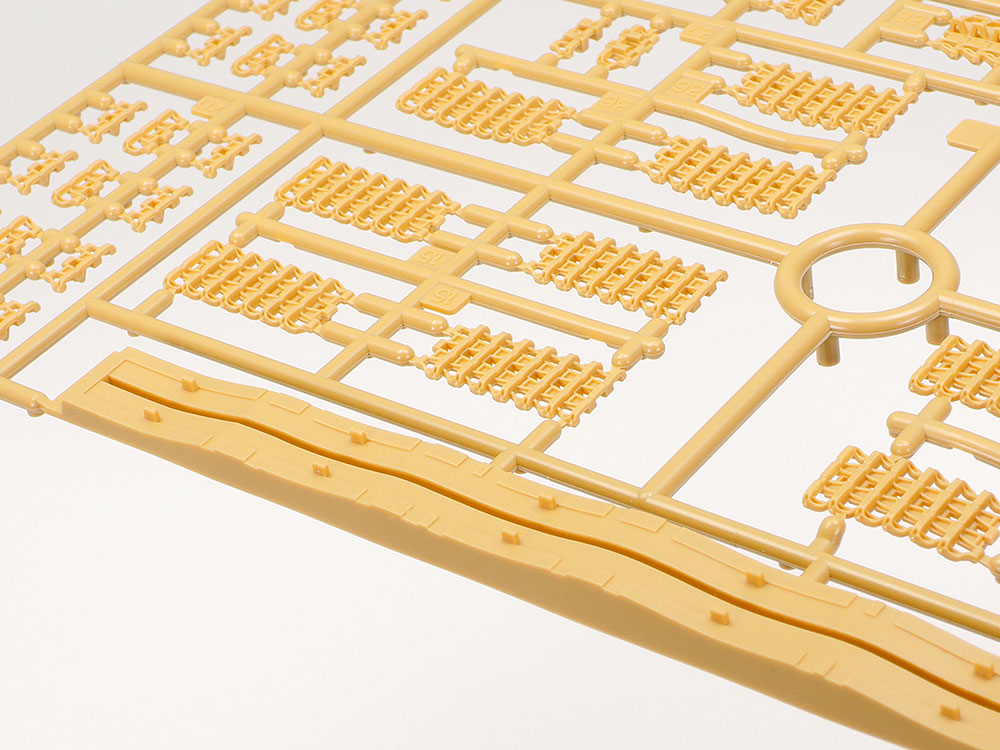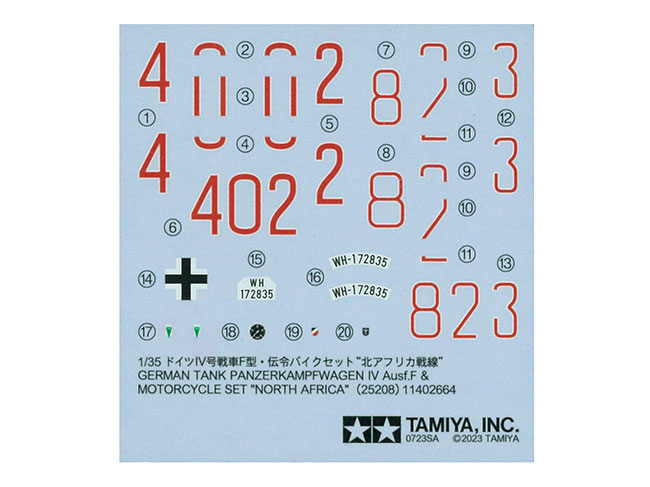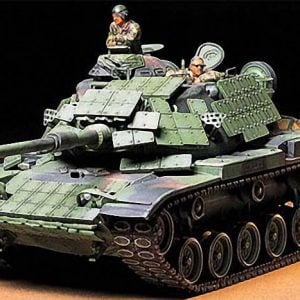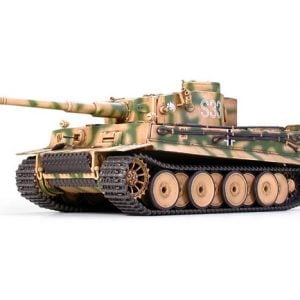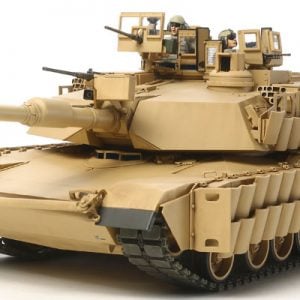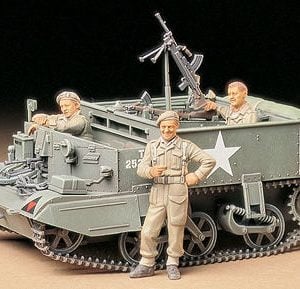Tamiya Panzer Ausf.F and Motorocycle North Africa 1/35 Scale 25208
$79.99
GST and HST Tax Break
En rupture d'inventaire
Email when stock available
La description
- This is a 1/35 plastic model assembly kit set.
- Pz.Kpfw.Iv Ausf.F length: 168mm, width: 82mm; Motorcycle length: 54mm.
- The boxy form of the short-barrel 7.5cm gun Ausf.F is captured in style.
- Tank tracks are assembly type, with one piece straight sections.
- The trusty, simple motorcycle silhouette is also accurately depicted.
- This set comes with six full body figures and a torso figure radio operator.
- Why not assemble this into a diorama showcasing a scene in the North African theater?
- Two Afrika-Korps marking options are included.
PzKpfw IV (Panzerkampfwagen IV) was a German medium tank from the Second World War. The first prototypes of the vehicle were created in 1936, and serial production continued in the period 1938-1945, ending with the production of about 8,600 vehicles. The D version of the tank was powered by a single Maybach HL 120 TRM engine with a capacity of 300 HP. It was armed with 1 75mm KwK 37 L / 24 gun and 2 7.92mm MG 34 machine guns.
The PzKpfw IV was created as a result of a competition announced at the end of 1934 by the German Armaments Department for a medium tank weighing up to 18 tons and armed with a 75 mm gun. The competition was won by the Krupp company, whose vehicle was put into mass production – as it turned out, it was a vehicle that can be safely called the “workhorse” of German armored forces during World War II and one of the most intensively developed and modernized Wehrmacht tanks. Numerous variants of the PzKpfw IV were created in the course of production. Chronologically, the first was the A version, armed with a 75mm short-barreled gun and a 230hp engine. However, versions B and C appeared quickly, in which several significant changes were made: first of all, more powerful engines (265 HP in version B and Maybach HL 120 TRM with 300 HP in C version – which were installed in PzKpfw IV until 1945 year), and the armor of the entire car was improved. The F1 and F2 versions turned out to be a real revolution, in which the frontal armor was increased to 60 mm, and the main armament was changed to the great, long-barreled 75mm KwK 40 L / 43 cannon, which in 1942 and 1943 allowed them to fight any Allied or soviet. The most frequently produced versions of the PzKpfw IV were the G, H and J versions, which were very similar to the F1 and F2 versions. The main armament has not changed significantly (it was still the KwK 40 cannon), as well as the engine and chassis. On the other hand, the armor was slightly strengthened, and from the beginning of 1943 armored screens (Schurzen) were installed on them. Numerous other vehicles were built on the chassis of the PzKpfw IV, such as the StuG IV assault gun, the Nashorn tank destroyer or the Wirbelwind self-propelled anti-aircraft gun. PzKpfw IV tanks were used on almost all fronts of World War II – from the September campaign in 1939, through the campaign in France in 1940, the Barbarossa and Typhoon operations in 1941, the Battle of Kursk in 1943, to the last operations of the German army against The USSR and the Western Allies in 1944-1945.
Due to the limitations of the Versailles Treaty of 1919, the German army could not develop many means of reconnaissance or communication, and for this reason, among others, in the 1920s, they put emphasis on the development of heavy motorcycles with good or very good road and off-road performance. After the Nazis came to power in 1933, the process did not stop, but it actually accelerated. He led to the introduction in the 1930s and during World War II of such successful designs as the BMW R-12, BMW R75 or Zündapp KS 750. It is worth adding that motorcycles in the German army very often had a sidecar, intended for a soldier with a machine gun. Motorcycles in the German army proved themselves particularly well in the initial period of World War II, especially in the course of fighting in Poland (1939), France (1940), but also in North Africa (1941-1943). They were used primarily for reconnaissance operations, sometimes in the rear of the enemy army, and for liaison tasks.
Afrika Korps (full German name: Deutsches Afrikakorps, abbreviated as DAK) is colloquially understood as the collective name of German land units fighting in North Africa in 1941-1943. The Afrika Korps was formed in February 1941, as a result of the painful defeats suffered by the Italian army during the battles with the British in Africa at the turn of 1940/1941. His main task was to come to the aid of the Italian ally and stop the advance of British troops in Libya. The commander of the unit was a general, and later a field marshal, Erwin Rommel. Initially, the DAK consisted of only the 5th Light Division (later transformed into the 21st Armored Division), in May 1941 it was joined by the 15th Armored Division, and at the end of 1941 – the 90th Light Division. It is worth adding that already in the middle of 1941 the Panzergruppe Afrika was founded, headed by Erwin Rommel, and it was joined by Afrika Korps. Despite the defensive tasks, the DAK (or more broadly the Panzergruppe Afrika) very quickly after landing – on the initiative of its commander – went into strictly offensive operations, inflicting a series of defeats in the desert on the British in 1941-1942. However, it was then that its commander was nicknamed the Desert Fox. At the same time, however, from the very beginning, DAK was troubled by supply problems, which had a negative impact on its ability to conduct offensive actions. He suffered a significant defeat during the Second Battle of El Alamein (October-November 1942), which forced the DAK to retreat as far as Tunisia, in which he fought until May 1943.
Assemblage et peinture requis. Le kit n'inclut pas la colle de ciment modèle, la peinture et les outils. Supervision d'un adulte si nécessaire.
Contenu sujet à changement.
Excellent kit Tamiya has best kits they go to gather with no problems
As always, Tamiya has delivered a very nicely detailed kit with great instructions. You can’t go wrong with this one.
Produits similaires
-
US Marine M60A1 USMC Tank avec armure réactive à l'échelle 1/35 Tamiya 35157
$47.99 Continuer la lecture4 reviews -
Kit de réservoir allemand Heavy Tiger I version tardive CA246 à l'échelle 1/35 Tamiya 35146
$54.99 Continuer la lecture2 reviews -
Tamiya US M1A2 SEP Abrams TUSK II 1/35 Scale 35326
$89.99 Ajouter au panier2 reviews -
Tamiya British Universal Carrier Mk.II 1/35 Scale 35175
$23.99 Continuer la lecture6 reviews

